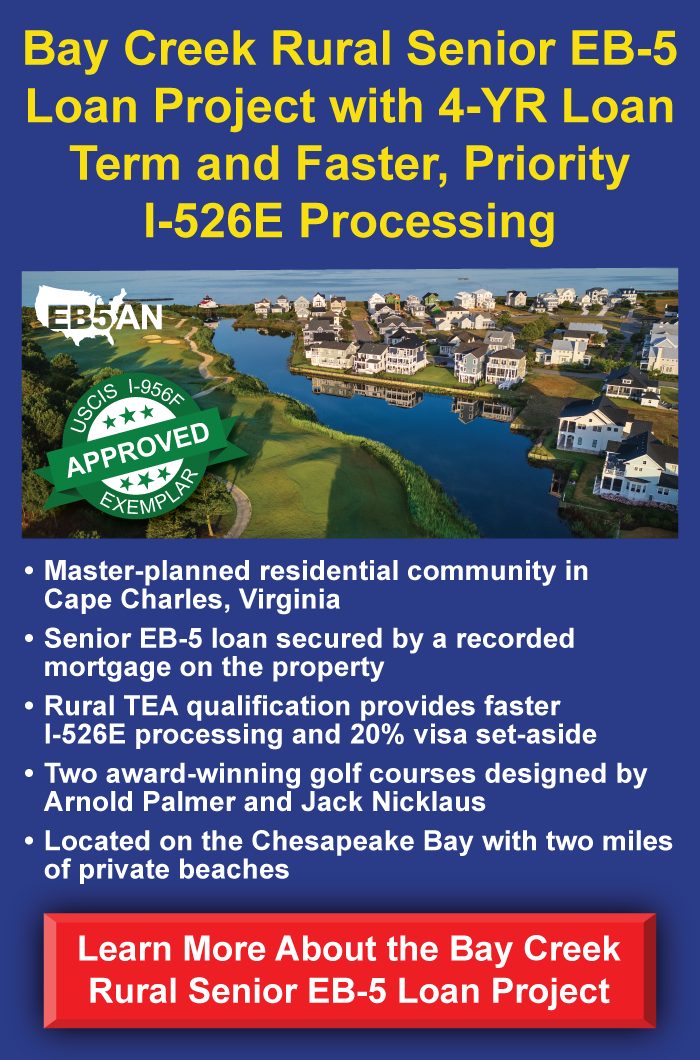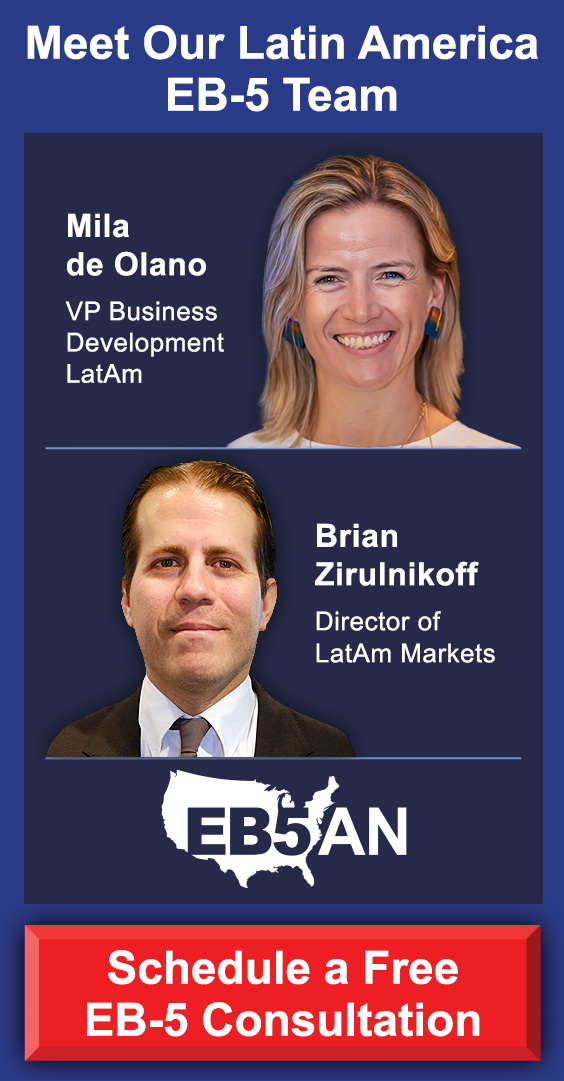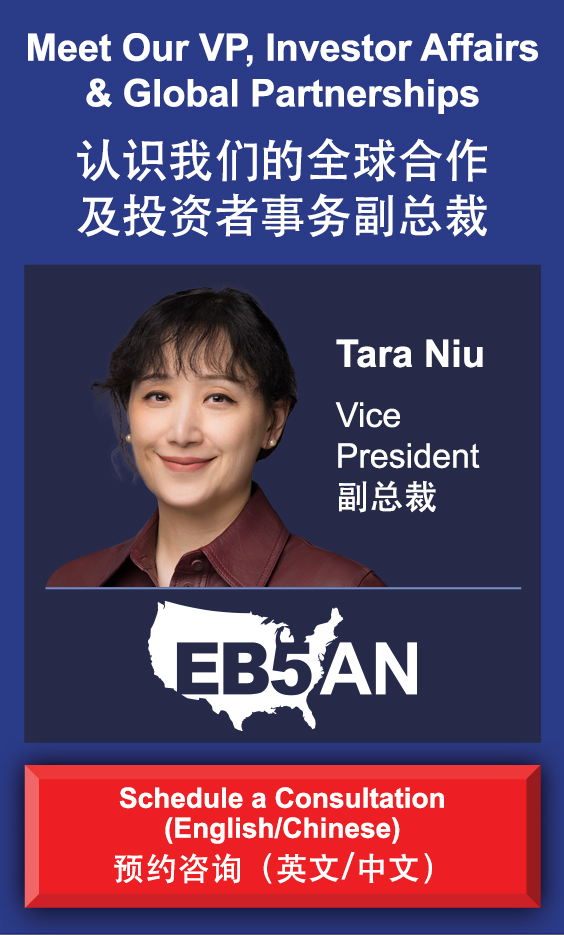Are you a J-1 visa holder who wants to live and work in the United States permanently?
If so, you’re in good company. A number of J-1 holders want to stay in the United States long-term.
Fortunately, reliable pathways to U.S. lawful permanent residency are available for J-1 holders. Many of them have successfully acquired Green Cards through such alternative visa programs.
However, visa program limitations and conditions can make this challenging. The processes are often complex and can take years to complete. Applicants must follow instructions carefully to get their Green Cards, and should work with experts.
In this article, we’ll describe the top pathways from a J-1 visa to a U.S. Green Card, with a focus on the most dependable solution for foreign nationals and their families.
J1 Visa Challenges
Traditional Pathways and Their Limitations
The EB-5 Visa: A Direct Path for J-1 Holders
How to Get Started With the EB-5 Process
- Step 1: Contact EB5AN to Determine Eligibility
- Step 2: Seek a Waiver for or Fulfill the Home Residency Requirement
- Step 3: Choose and Invest in the Right EB-5 Project
- Step 4: File Form I-526E and Form I-485
- Step 5: Fulfill Remaining Program Requirements
- Step 6: Submit I-829 Petition for Removal of Temporary Green Card Conditions
Take Control of Your Immigration Journey: Convert Your J-1 Visa to a Green Card With EB5AN
J1 Visa Challenges
The J-1 is a nonimmigrant visa that allows foreign nationals to participate in programs in the United States for cultural exchange and educational purposes. It’s often held by scholars, students, interns, and researchers.
A two-year home residency requirement—per Section 212(e) of the Immigration and Nationality Act—may apply. Some J-1 holders must return to their home country (or country of last legal residence) and be physically present there for two years after their J-1 program ends before they become eligible for certain U.S. immigration benefits.
While subject to that rule, they cannot (while inside the United States) change their status to certain visas (such as H-1B, L-1, K) or adjust their nonimmigrant status to permanent residency (a “Green Card”) unless the two years are served or a waiver is granted.
This is the main obstacle for J-1 holders seeking to transition to a Green Card. The rule blocks adjustment of status to lawful permanent resident and other immigrant or dual-intent visas until the two-year foreign residency is completed or waived. This means that even if someone in J-1 status later receives an offer that could lead to a Green Card, they cannot proceed until fulfilling or obtaining a waiver of the 212(e) requirement.
In practice, the need to return home for two years (or secure a waiver) often delays or complicates a straight path from J-1 to Green Card.
J-1 holders (and their J-2 dependents) are subject to the two-year rule if they meet any of the following criteria:
- Their J-1 program was a government-funded exchange program (in whole or in part) by the U.S. government or the exchange visitor’s home country’s government.
- The visitor is participating in graduate medical education or training in the United States (e.g., a medical residency) under the J-1.
- The visitor is acquiring a “skill” (as defined by the U.S. Department of State’s Exchange Visitor Skills List) that is in short supply in their home country.
Check your J-1 visa stamp and the DS-2019 form. Usually, there will be a notation indicating “Subject to Section 212(e)” if the requirement applies.
Traditional Pathways and Their Limitations
Let’s take a look at the main routes to lawful permanent residency and their challenges for J-1 holders.
EB-2 and EB-3 Employment-Based Visas
EB-2 and EB-3 are two employment-based Green Card routes. These are among the most common routes for skilled professionals who wish to immigrate to the United States.
EB-2 (“Second Preference”) is for foreign nationals who hold an advanced degree (master’s or higher, or a bachelor’s degree plus five years progressive experience) or who have “exceptional ability” in sciences, arts, or business.
EB-3 (“Third Preference”) covers three sub-groups:
- Professionals (jobs requiring at least a U.S. bachelor’s degree or its equivalent)
- Skilled workers (jobs requiring at least two years training or experience)
- Other workers (unskilled jobs requiring less than two years training).
Because many skilled workers (especially those already working in the United States under temporary visas) pursue employer-sponsored permanent residence, EB-2 and EB-3 are often realistic options. They allow the worker (and typically spouse/children) to eventually obtain a Green Card rather than just a temporary visa.
The pros include:
- Employer sponsorship: A U.S. employer typically files the petition (Form I-140) and the required labor certification. This gives the applicant a path via their job.
- Standard for many jobs: EB-3 especially can apply to a fairly broad class of jobs (professionals with bachelor’s, skilled workers) making it accessible. EB-2 offers a higher tier, often for roles with advanced degrees or exceptional ability.
- Permanent resident status: Once approved (and a visa number becomes available) you and your qualifying dependents can adjust to permanent resident status, providing long-term stability.
- Streamlined application process in some cases: Those who qualify for an EB-2 National Interest Waiver may enjoy a streamlined application process without employer sponsorship or labor certification requirements, and can self-petition.
The cons include:
- Long and uncertain process: Many applicants, especially from countries with high demand (e.g., India, China), face significant visa backlogs. This may delay Green Card approval.
- Dependence on employer: Because the employer must sponsor the petition and often the labor certification, the applicant remains tied to that relationship until their Green Card is secured. If the employer withdraws or circumstances change, the process can stall.
- Backlogs and per-country limits: The United States imposes per-country annual caps on employment-based Green Cards, so applicants from oversubscribed countries may wait many years.
- Complexity and cost: The process can require considerable time, effort, and legal fees.
- Priority date risk: Even after I-140 approval, you must wait for your “priority date” to become current in the monthly Visa Bulletin before you can move to the final step. If the date retrogresses, you may get stuck.
EB-1A Extraordinary Ability Visas
EB-1A is for individuals who can demonstrate “extraordinary ability” in the sciences, arts, education, business, or athletics. This means they have sustained national or international acclaim and are among the small percentage who have risen to the very top of their field.
Unlike many other employment-based categories, the EB-1A does not require a job offer or labor certification.
The pros of this approach include:
- Faster processing because it’s a “first preference” category.
- You may self-petition (no employer sponsor needed).
- No labor certification is required, which shortens and simplifies the path to a Green Card.
The cons of this approach include:
- Eligibility requirements are difficult to fulfill: you must show you’re truly at the top of your field. This requires extensive documentation of national or international acclaim.
- Even with strong credentials, adjudication can be unpredictable. Building a persuasive, well-documented case is challenging.
- Because you must demonstrate continuing work in your field of extraordinary ability, your future career still needs to align with that narrative.
Family-Based Visas
Family-based visas are an option for foreign nationals with family members who are U.S. citizens or U.S. lawful permanent residents. These allow a U.S. family member to sponsor an eligible alien relative for U.S. permanent residency.
Such visas fall under two broad groups: “immediate relatives” of U.S. citizens (spouses, unmarried children under 21, and parents) with no numerical limit, and “family preference” categories (other relatives) that are subject to annual caps.
The pros of this approach include:
- They provide a direct pathway toward a Green Card.
- For immediate-relative cases, there are no numerical limits, which can mean faster processing in those categories.
The cons of this approach include:
- Eligibility is limited to those who meet specific family relationship criteria. Since only certain relatives qualify, many extended family members (such as grandparents, cousins, and aunts/uncles) are not eligible.
- For the preference categories (non-immediate relatives) there are annual visa caps and countries of origin limits, causing long wait times—sometimes many years.
- The application process still requires proof of the relationship, financial sponsorship, and can be complex and documentation-heavy.
The EB-5 Visa: A Direct Path for J-1 Holders
The EB-5 Immigrant Investor Program is a powerful, alternative solution for J-1 visa holders who want to remain in the United States permanently.
What Is the EB-5 Visa?
This is an employment-based immigrant visa category in the United States designed to grant lawful permanent residence to foreign investors and eligible family members. To qualify, an applicant must invest in a U.S. commercial enterprise that creates or preserves jobs for U.S. workers. These are key features:
- The investor must make a minimum capital investment: at least $1,050,000 for a standard project or $800,000 if the investment is in a designated Targeted Employment Area (TEA) or certain infrastructure projects.
- The investment must create at least 10 jobs for qualified U.S. workers.
- Once approved, the investor (and their spouse and unmarried children under 21) gain conditional permanent resident status for two years; after meeting conditions, they may file to remove the conditions and receive full permanent resident status.
Why an EB-5 Visa Is the Ideal Solution for J-1 Holders
Unlike some other pathways to a Green Card, the EB-5 visa does not require employer sponsorship, a specific job offer, or a labor certification process. It does not have a two-year home-residency requirement. It does not require an applicant to have extraordinary ability.
This means a J-1 holder can shift toward an investment-based Green Card path that may bypass some of the typical obstacles and special considerations associated with other petitions. Since EB-5 leads directly to lawful permanent resident status for the investor and their family, it offers a clearer, more independent route than sponsorship-based categories.
With EB-5, you stay in control of your immigration process.
How to Get Started With the EB-5 Process
Here’s a simple, step-by-step guide to the EB-5 application process for a J-1 holder.
Note that you must undergo consular processing—which has a different application process—if you are physically located outside of the United States or without U.S. lawful status when applying for an EB-5 visa.
Step 1: Contact EB5AN to Determine Eligibility
A prospective EB-5 investor should contact EB5AN to confirm eligibility for the program. These are the main things we’ll ask you to do.
- Fill out our EB-5 investor questionnaire.
- Sign our non-disclosure agreement to receive our investment offering documents.
- Read all offering documents and be ready to make key investment decisions.
Step 2: Seek a Waiver for or Fulfill the Home Residency Requirement
As previously mentioned, many J-1 visa holders are subject to a two-year home-country physical presence requirement.
If this applies, you must either apply for a waiver or return to your home country or country of last legal residence for two years before applying to adjust status to another visa category.
Grounds for a Waiver
There are five main waiver bases under which you may apply:
- No Objection Statement
- Your home government issues a written statement (often through its embassy/foreign ministry) stating it has no objection to you not returning to fulfill the two-year home stay and to your becoming a U.S. lawful permanent resident.
- The statement must be sent directly (via diplomatic channels) to the U.S. Department of State’s Waiver Review Division. You as the J-1 holder cannot submit it on your own.
- Note exceptions: If you received U.S. government funding or your program was for medical training, this option may not be available.
- Request by an Interested U.S. Federal Government Agency
- A U.S. federal agency (for which your work is “actively and substantially involved in a program or activity”) may request a waiver because your departure (or required two-year home stay) would be “detrimental to its interest”.
- The agency sends a formal letter to the Waiver Review Division. You apply accordingly.
- Persecution
- If you can demonstrate that, if you returned to your home country, you would face persecution on account of race, religion, or political opinion.
- The process involves filing Form I-612 (for non-immigrant waiver) in some cases.
- Exceptional Hardship Waiver
- If your U.S. citizen or lawful permanent resident spouse or child would suffer exceptional hardship if you had to fulfill the two-year home-country requirement. Mere separation is not enough.
- Program in Public Health
- For foreign-physician J-1 participants (medical doctors) working in underserved areas under state public health programs. This is a specific pathway under some state health departments.
How to Apply for a Waiver
Here’s how you’d proceed:
- Confirm whether you are subject to the two-year requirement (check your J-1 visa stamp, DS-2019, passport annotation).
- Choose the waiver basis that you are eligible for from the list of grounds above. Choose only one basis per waiver application.
- For a “No Objection” basis: request the No Objection Statement from your home government (usually via your embassy).
- Submit the waiver application with the appropriate forms and documentation (the J-1 waiver process starts with the U.S. State Department’s Waiver Review Division)
- Once the Waiver Review Division issues a recommendation for a waiver, file for adjustment of status or take the next visa step.
- Caution: If you receive a favorable waiver recommendation, you generally cannot extend your J-1 program beyond its current end date
Step 3: Choose and Invest in the Right EB-5 Project
Almost all EB-5 applicants choose to invest via designated regional centers instead of investing directly into an EB-5 project. This is the safest, easiest, and most reliable route to a Green Card.
An applicant must also choose an EB-5 project to invest in. As previously mentioned, the individual must make a minimum qualifying capital investment of $800,000 into a TEA project.
You must also show that your investment funds came from a lawful source (e.g., salary, sale of assets, inheritance, etc.).
Step 4: File Form I-526E and Form I-485
An EB-5 regional center investor must submit Form I-526E, Immigrant Petition by Regional Center Investor, to United States Citizenship and Immigration Services (USCIS) and pay a filing fee as part of the application process.
A USCIS immigration officer reviews this form to determine whether an investor has complied with the program’s requirements. Approval is necessary for an applicant to receive conditional permanent residency and a permanent Green Card.
An EB-5 applicant who is already in the United States must also file Form I-485, Application to Register Permanent Residence or Adjust Status, to change their immigration status to conditional permanent resident.
It’s a good idea to work with an immigration attorney when filling out these forms.
You can apply for a travel document (Advance Parole) and a work permit (Employment Authorization Document or EAD) concurrently with or after filing Form I-485, Application to Register Permanent Residence or Adjust Status.
After USCIS approves Form I-526E, your investment is judged to be compliant with all EB-5 program requirements. You will then receive a conditional two-year Green Card for U.S. permanent residence.
Step 5: Fulfill Remaining Program Requirements
These are other important EB-5 program requirements you must meet to gain a Green Card.
- Keep your investment “at risk” (i.e., with the potential for loss, not guaranteed return) in a new commercial enterprise for at least two years.
- Create at least 10 full-time jobs for U.S. workers. If investing through a designated regional center, indirectly created jobs on the local economy may count too.
Step 6: Submit I-829 Petition for Removal of Temporary Green Card Conditions
- Three months before the conditional Green Card expires, the investor’s immigration attorney will submit Form I-829 to remove temporary conditions.
- Once the I-829 petition is approved, the investor will receive a permanent Green Card.
- Each investor typically receives their investment funds back after the loan term expires.
After being a U.S. lawful permanent resident for five years, an EB-5 Green Card holder may apply for U.S. citizenship.
Take Control of Your Immigration Journey: Convert Your J-1 Visa to a Green Card With EB5AN
For those J-1 visa holders who seek U.S. lawful permanent resident status and meet the eligibility criteria, the EB-5 program is one of the best options available.
The EB-5 process and immigration law can be complex, and they require careful planning. Your Green Card application is not something that you should pursue by yourself. EB-5 applicants who work with reputable regional centers gain serious advantages over those who do not.
EB5AN has helped more than 2,700 families from 70+ countries relocate to the United States as lawful permanent residents. Our expert team has more than a decade of experience, and offers clients first-rate, low-risk EB-5 regional center projects with a 100% USCIS project approval rate to date.
To learn more about how you can apply for a Green Card under the EB-5 program, book a free call with us today.












